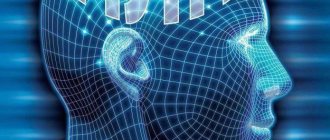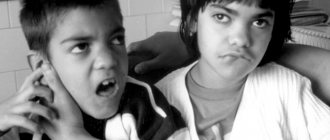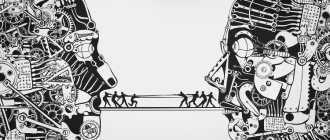To the reference book Diagnosis of vestibular function is carried out through rotational and caloric tests, as well as flank gait, Romberg position and other studies.
Author:
- Sadykhov Rahim Agalarovich
ENT pathology expert
3.00 (Votes: 2)
Diagnosis of vestibular function - identification of spontaneous symptoms of pathologies of the inner ear, the degree of excitability of the vestibular apparatus. Experimental tests are carried out to help determine what causes the symptoms - damage to the labyrinth or parts of the brain.
Symptoms
Such studies are resorted to when:
- dizziness (this symptom can be a sign of various pathologies, for example, with damage to the labyrinth, patients can often describe in detail the nature of dizziness, including indicating the exact direction of rotation of objects, position of the head and body, etc.);
- vegetative symptoms (in addition to dizziness, the subjects complain of nausea, which can be replaced by vomiting, increased sweating, pale skin, changes in pulse rates, etc.);
- spontaneous nystagmus (one of the most important symptoms, represents oscillatory movements of the eyeballs, which can be fast or slow, develops due to a disruption of impulses coming from the labyrinths to the nerves).
Along with this, typical markers of dysfunction of the vestibular apparatus are imbalance and unsteady gait.
Instability in the Romberg position
Instability and swaying during execution are the main signs of abnormalities in the functioning of the nervous system.
Moreover, different types of instability indicate different problems:
- an unstable posture with open eyes means problems with the cerebellum;
- staggering both with eyes closed and with open ones speaks of disorders of the cerebral cortex - and the subject falls in the direction opposite to the zone that requires treatment;
- rocking with the patient's eyes closed may be symptoms of diabetes or joint and muscle ailments;
- swinging to the sides are symptoms of neuroses or VSD syndrome (vegetative-vascular dystonia).
I repeat, only an experienced doctor can accurately determine the nature of health deviations! However, at home you can only understand whether there is a reason to contact him or not.
Watch a useful video about how the Romberg pose is not only a diagnostic of the state of the brain and nervous system, but also the vascular system and the spine. In essence, it is the diagnosis of such hidden ailments as arteriosclerosis and cervical osteochondrosis:
So, if staggering or loss of balance is observed in the Romberg pose, then you should definitely do a CT scan of the brain, conduct an ultrasound of the arteries and check the level of cholesterol in the blood.
Types of diagnostics
To diagnose vestibular function in otolaryngology, the following types of studies are used:
Romberg pose
Named after the German professor of internal medicine MH Romberg, this position involves the subject taking a vertical position, feet together, arms extended forward, eyes closed.
The method allows you to identify changes in balance when vision is turned off. Depending on the causes and severity of the violations, a person in this position begins to stagger and may even fall. In the latter case, we are talking about the so-called Romberg symptom, which indicates possible damage to the cerebellum, dysfunction of the vestibular analyzer, damage to the spinal cord, the development of polyneuritis, etc.
If it is not possible to detect violations in this way, the study can be modified and complicated, for example, the patient is asked to place his feet one after the other, keeping a straight line.
Flanking gait
When performing this test, the subject moves to the sides, placing one leg next to the other. The eyes remain closed. This study is of great diagnostic value in cases of suspected cerebellar pathologies, since it is often impossible to perform these movements in such clinical cases. Damage to the labyrinth does not make any changes in the flanking gait.
Rotational test
This method's main task is to identify the functional state of the labyrinth, which helps determine the location of the pathological process. The subject sits in a chair with a manual or electric drive and is fixed. The head is slightly tilted forward and down.
After which the doctor sets the chair in motion at a speed of 1 revolution per 2 seconds. After 10 revolutions, it stops abruptly, all deviations of the body, vegetative and other reactions of the patient are recorded. The same actions are performed in the opposite direction, and the obtained indicators are compared.
Caloric test
The basis of the caloric test, as well as the rotational test, is the study of nystagmus, which allows you to assess the functionality of the labyrinth. But in this case, hot or cold water is used as an irritant, which is introduced into the external auditory canal.
Normally, nystagmus appears after 5-10 seconds and lasts 1-2 minutes. One ear is examined first, then the other. The indicators are recorded and compared, and based on the data obtained, overexcitation or, conversely, depression of the labyrinth is diagnosed.
After comparing the results of the last two tests, the doctor sees an objective picture that reveals the degree of irritation of the vestibular apparatus and serves as a fundamental basis for the subsequent differentiation of diseases of the vestibular analyzer.
Evaluation of results
The Romberg pose in neurology, in addition to determining dysfunction of the cerebellum and cerebral hemispheres, gives an assessment of a person’s physical fitness (there are tables and photos):
- if the pose is maintained for more than 15 seconds without tremor, the person is healthy, this is the norm for stability;
- there is a staggering of the body - the indicator is satisfactory;
- holding a pose for less than 15 seconds – unsatisfactory stability;
- the presence of tremor in the patient’s limbs is an indicator of body disorders.
Yogic version
In the arsenal of yoga poses there is a similar position: Tadasana is a mountain pose, in some schools of yoga it is called Samastitihi, which means “to stand straight and calm.” This is the basic position from which the lesson begins, a test for the stability of the mind and the body’s reaction to it.
Some beginners consider this pose uninteresting and insignificant due to its apparent simplicity, and only over the years they understand its real taste and importance, because yoga is not a beautiful or spectacular body position, like legs behind the head, but the ability to keep your mind in check ( "Yuj", the word from which the term "yoga" comes from, translated from Sanskrit means bridle, harness), remaining even and calm in any situation
In the arsenal of yoga poses there is a similar position: Tadasana is a mountain pose, in some schools of yoga it is called Samastitihi, which means “to stand straight and calm.” This is the basic position from which the lesson begins, a test for the stability of the mind and the body’s reaction to it.
Some beginners consider this pose uninteresting and insignificant due to its apparent simplicity, and only over the years they understand its real taste and importance, because yoga is not a beautiful or spectacular body position, like legs behind the head, but the ability to keep your mind in check ( "Yuj", the word from which the term "yoga" comes from, translated from Sanskrit means bridle, harness), remaining even and calm in any situation
Neurological examination of reflexes and motor functions
A neurological examination of reflexes and motor functions examines volume, muscle strength, muscle tone, and reflexes to identify and evaluate voluntary movement disorders.
To determine the range of movements, the patient is asked to alternately perform movements in various joints of the arms and legs and observe the completion of the task.
When diagnosing neurology, muscle strength is assessed with a dynamometer or by the degree of resistance (for example, to study the strength of the forearm flexors, the patient’s arm is extended, bent at the elbow joint).
The inability to make active movements is regarded as paralysis; significant decrease in muscle strength as deep paresis; slight decrease in strength as mild paresis.
In clinical practice, muscle strength is sometimes assessed on a five-point scale: from 5 points (normal) to 0 (complete paralysis, absence of any strength and movement). To identify hidden paresis, the Barre test is used. With the upper Barre test, the patient is asked to stretch both arms forward; on the affected side, the hand gets tired faster and drops. With the lower Barre test, the patient, lying on his back or stomach, bends his legs at the knee joints at a right angle; on the affected side the leg drops faster than on the healthy side.
To determine muscle tone, passive movements are made in the joints of the limbs. Normally, a slight resistance of relaxed muscles is detected; with central (spastic) paralysis and paresis - spastic muscle tension; and with peripheral (flaccid) - muscle hypotonia.
Muscle trophism is examined visually
Pay attention to the symmetry of muscles, the presence of atrophies (emaciation), which are identified by measuring symmetrical areas
Reflexes are distinguished between deep (tendon-periosteal), superficial and pathological. Their arcs close at a certain level of the nervous system.
The deep reflexes most often studied include:
- Carpal-radial (carporadial) - slight flexion of the arm at the elbow joint when hitting the styloid process of the radius with a hammer
- Bicepsial - flexion of the forearm when hitting the biceps tendon with a hammer
- Tricepital - extension of the forearm half-bent at the elbow joint when hitting the triceps tendon with a hammer
- Knee - extension of the lower leg when hitting the patellar tendon with a hammer
- Achilles - plantar flexion of the foot when hitting the Achilles tendon with a hammer
Deep reflexes are reduced or extinguished when the peripheral neuron of the motor pathways is damaged and increased when the central neuron is damaged.
Surface reflexes include:
- Corneal (corneal) - closing of the eyelids when touching the cornea
- Pharyngeal - coughing, gagging movements due to irritation of the pharyngeal wall
- Abdominal (upper, middle, lower) - contraction of the muscles of the abdominal wall during stroke stimulation
- Plantar - flexion of the toes with stroke stimulation of the outer edge of the sole
Pathological reflexes. When the cerebral cortex is damaged, the following pathological subcortical reflexes can be observed (some of them are found normally in young children):
- Proboscis - contraction of the orbicularis oris muscle, protrusion of the lips forward when tapping the upper or lower lip with a hammer
- Padono-mental (Marinesco-Radovici) - contraction of the muscles of the chin with stroke stimulation of the thenar area
- Grasping (Yanishevsky) - when the palm of the proximal phalanges is irritated, the patient grabs an object and holds it tightly in his fist
Damage to the pyramidal tracts is characterized by pathological reflexes on the feet and hands:
- Babinski's sign is the most constant, clinically important reflex, which is manifested by slow tonic extension of the big toe with line irritation of the outer edge of the sole (in this case, a fan-shaped divergence of the remaining toes is possible)
- Rossolimo's sign superior - flexion of all fingers of the hanging hand with a short blow to the terminal phalanges of the II-V fingers
- Rossolimo's symptom lower - rapid plantar flexion of the toes with a short blow to the terminal phalanges of the II-V fingers
Sleeping while sitting: risk of thrombosis
The chief freelance cardiologist of the Crimean Ministry of Health, Valery Sadovoy, previously warned about the dangers of short sleep while sitting.
He said that in this case, intra-abdominal pressure may increase, in addition, this position can have a bad effect on the heart. According to the doctor, people who often sleep sitting up suffer from edema, and they also increase the risk of varicose veins and thrombosis.
In both eyes
Photo: RIA Novosti/Alexey Sukhorukov
At the same time, the doctor spoke in favor of daytime sleep, which, according to him, can help lower blood pressure and allow you to feel a surge of energy. However, this does not eliminate the need to get enough sleep regularly.
— The body usually understands itself what it needs to do every certain period of time. An eight-hour rest is what is truly available and recommended,” he noted.
Hidden threat: nutritionists named healthy foods that are harmful to the body
Why tuna, yogurt and garlic can be dangerous
How testing is carried out
In many ways, balance testing depends on what kind of deviation is being diagnosed. In order for the patient to take the correct position, he needs to stand straight, with his legs pressed tightly against each other.
Next, the patient should stretch his arms in front of him and close his eyes. But test variants are possible when the eyes are closed, but the arms remain in a lowered position along the body. In this situation, the doctor must support the patient, preventing falls and injuries.
If we talk about the sphere of neurological abnormalities, then with this position any staggering is taken into account and the main task of checking the Romberg symptom is to determine the degree of stability. Time intervals are also taken into account, which are also important for correct diagnosis.
A more difficult version of the test involves placing your legs so that they are on the same line. This happens as follows: the patient places his feet so that the heel (for example, the right foot) is in contact with the toes (of the left foot) and they are on the same line.
In this position, the patient should extend his arms in front of him and close his eyes. An option is possible in which the head is thrown back.
Diagnosis of Parry Romberg syndrome in practice:











